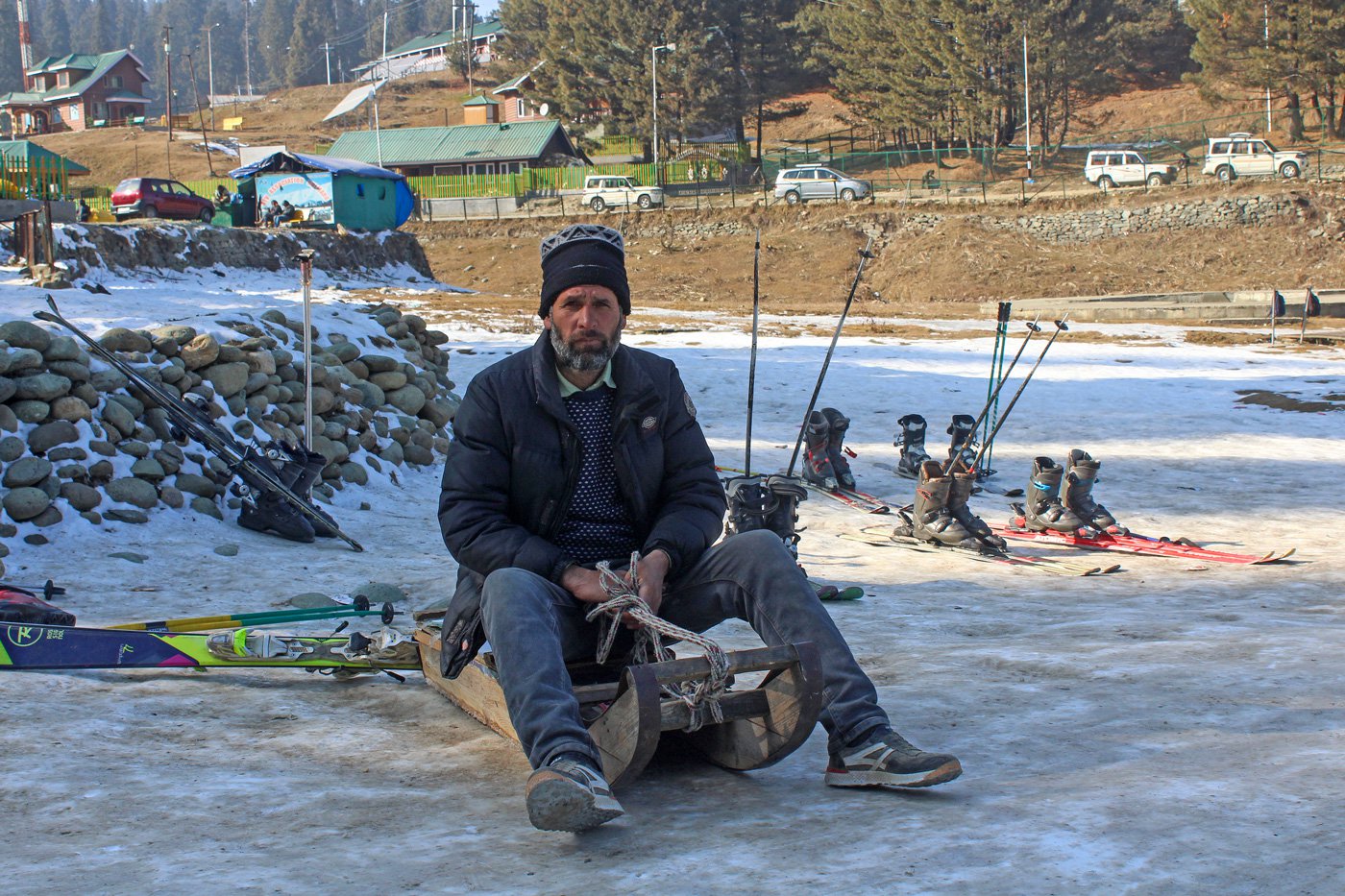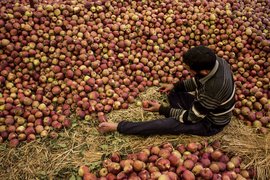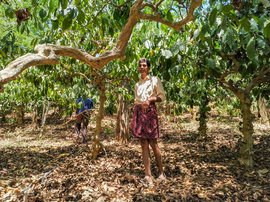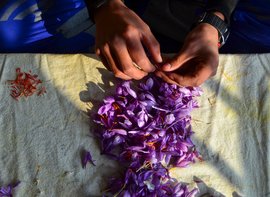Abdul Wahab Thoker was ready to ferry excited passengers in his sledge on Gulmarg’s snowy slopes. On January 14th, 2024 however, a dejected Thoker sat on top of his vehicle, overlooking a devastating sight – a brown and barren landscape.
"It’s chila-i-kalan [the peak of winter] and there is no snow in Gulmarg,” says the baffled 43-year-old. Thoker, who has been pulling sledges for 25 years says he has never seen something like this and is terrified: “ If the situation continues, we will soon be in debt.”
The snow-covered mountains of Gulmarg – a famous hill station in the union territory of Jammu and Kashmir’s (J and K) Baramulla district – draw millions of people from across the world every year. It’s tourism that plays a key role in supporting the local economy of about 2,000 people ( Census 2011), and even others like Thoker who travel here for work.
A resident of Kalantara village in Baramulla, he journeys 30 kilometres to Gulmarg every day via local transport, hoping to find work. "Now, even if I have a customer these days, I only make 150-200 rupees as there is no snow to ride on," he says, "All we can do now is ferry customers on frozen water [from the previously melted snow]."
“Gulmarg in the winter is a 'magnificent experience,’ says the official Jammu and Kashmir website , ‘fully covered in a white blanket of snow which turns it into a skier's paradise. The natural slopes here are untouched and are a challenge to ace skiers!'”

Due to no snowfall, sledge pullers in Gulmarg have switched to taking customers for rides on frozen water
On the ground in Gulmarg, the above is anything but true. This winter, climate change has battered livelihoods on these Himalayan slopes. The effects of no precipitation are far-reaching, both ecologically and economically for people whose livelihoods related to grazing depend on the snow to regenerate pastures. "The climate is changing globally, and it is impacting the Kashmir region too," says Dr. Mohammad Muslim, a scientist from the Department of Environment and Science at the University of Kashmir.
Take Thoker’s earnings: in better years, he says he would make Rs. 1200 a day. The cost of the journey and familial responsibilities exceed his earnings these days. "I only make 200 rupees here, but I have to spend 300 [rupees]," he laments. Thoker and his wife are eating into their meagre savings to provide for their two teenage children and themselves.
The lack of snow this year is due to changes in ‘western disturbances’, says Dr. Muslim. This is a meteorological phenomenon that starts as subtropical storms in the Mediterranean region moving eastwards via jet streams (bands of strong wind) and eventually resulting in snow and rainfall over Pakistan and northern India. Western disturbances are crucial to water security, farming, and tourism in the region.
The capital city of Srinagar recorded a maximum temperature of 15 degrees Celsius on January 13th, the highest in two decades. The rest of north India was several degrees colder around the same time.
“So far, we have not received any major snowfall in anywhere in Kashmir and the weather is getting hotter. Pahalgam witnessed an all-time highest temperature of 14.1 degree Celsius on 15th of January. The highest temperature previously witnessed there was 13.8 degree Celsius in 2018,” Says D. Mukhtar Ahmed, Director Meteorological Centre Srinagar.
There has been no significant snowfall in Sonmarg and Pahalgam. Temperatures are rising all around, resulting in warmer winters in the region. In the last decade, various studies indicate that the rate of warming in the Himalayas is greater than the global average, making it one of the world's most vulnerable places to climate change.


Left: Gulmarg in January 2024; normally there is 5-6 feet of snow covering this area. Right: Mudasir Ahmad shows a photo of snow-clad mountains in January 2023
Locals are now calling the winter landscape a 'desert,' and it has had a crushing effect on the tourism industry. Hoteliers, guides, sledge-pullers, ski instructors, and ATV (all-terrain vehicles) drivers, among others, are struggling.
"There were 150 cancellations in January itself. If the situation remains, the numbers may increase, "says Mudasir Ahmad, Manager at Gulmarg's Hotel Khaleel Palace. "I have never seen such bad weather in my entire life," says the 29-year-old. Ahmad estimates his losses this season to be already close to Rs. 15 lakhs.
At Hilltop Hotel, staff have noticed early check-outs too. "Guests who come here to see snow are disappointed. "Every other day, they leave earlier than they were supposed to," says Aijaz Bhat, 35, manager at Hilltop, which employs 90 people. Most Gulmarg hotels bear the same fate, he says. "Last year, we received around 5-6 feet of snow by this time, but this year, we have only seen a few inches."
Javaid Ahmad Reshi, a ski guide, implicates locals for these untoward environmental changes "I can't blame a tourist for coming to Gulmarg and destroying it," says the 41-year-old. "We have destroyed Gulmarg with our own hands."

Javaid Reshi displays ski gear outside his hut in Gulmarg. Lack of snow in January has affected his livelihood
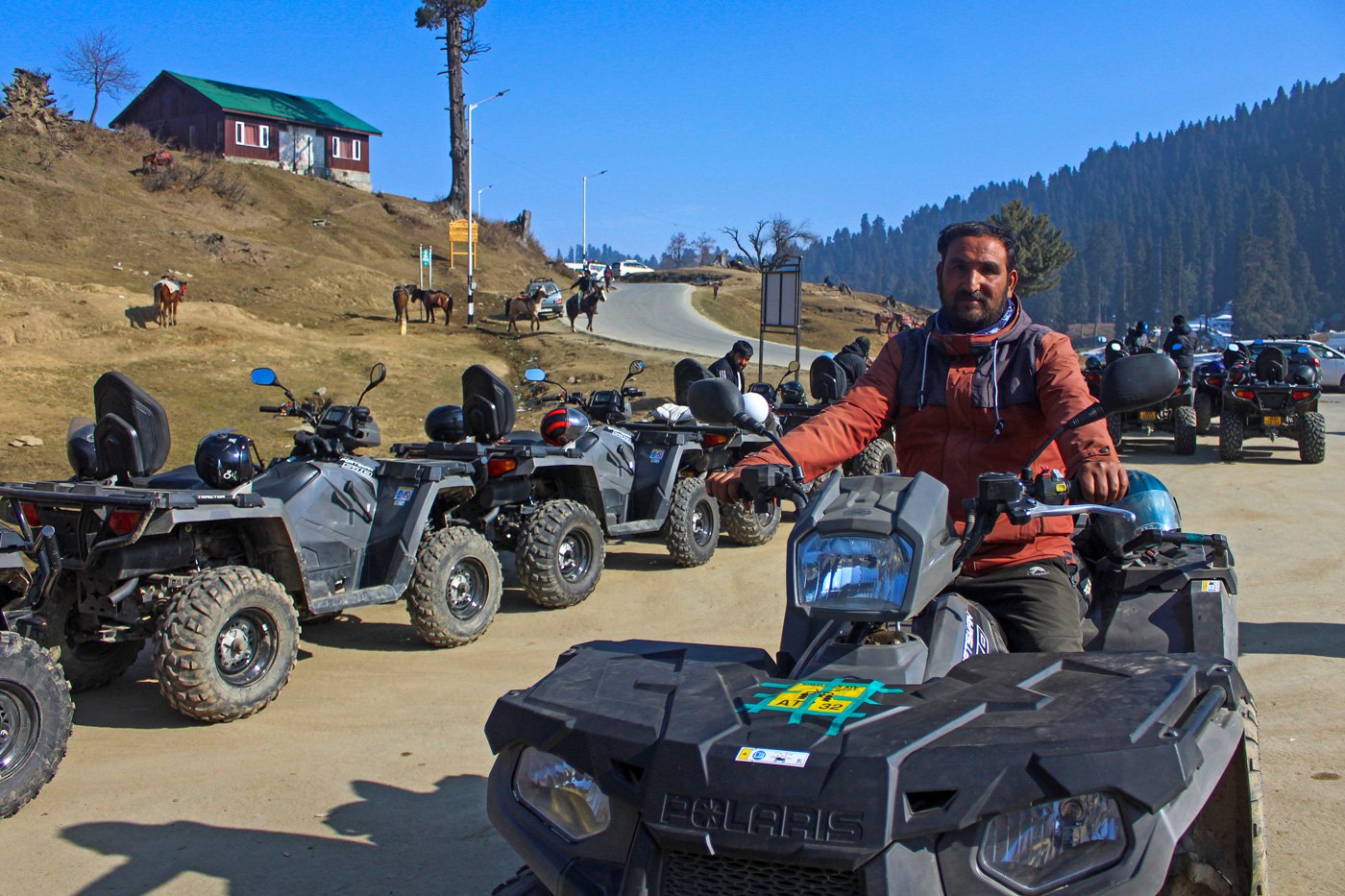

Left: 'People don’t want to ride ATV on the road, they like to ride it on snow,' says Mushtaq Bhat, an ATV driver in Gulmarg. Right: With no business, many drivers have packed and covered their vehicles in plastic
An ATV driver, Mushtaq Ahmad Bhat, has been driving off-road vehicles for a decade now. During the winter, ATVs are the only mode of transport when snowfall is heavy. Drivers can charge RS. 1,500 a ride that can last up to an hour and a half.
Mushtaq is also of the opinion that the increase of vehicles is exacerbating the micro climate of the region. "Authorities should stop allowing vehicles inside Gulmarg bowl (shaped like a bowl when viewed aerially) as it is destroying the greenery of the place and is also responsible for no snowfall here. This has affected our earnings badly," says the 40-year-old.
It’s been over three days since he had a customer, leaving Mushtaq feeling jittery especially since his ATV was bought on a loan of Rs. 10 lakhs. When he purchased the vehicle, Mushtaq envisioned good business in the years ahead, believing he could repay the loan quickly. "Now I feel like I won't be able to pay it back and may even have to sell my ATV this summer."
Even clothing rental stores are empty, save for the staff. "Our business depends entirely on snowfall as we provide coats and snow boots to the tourists who visit Gulmarg. We don't even make 500-1000 rupees these days," says Fayaz Ahmad Deded, 30, who works at a local clothing rental shop, popularly called Coat and Boot stores in Tangmarg, a town half an hour from Gulmarg.
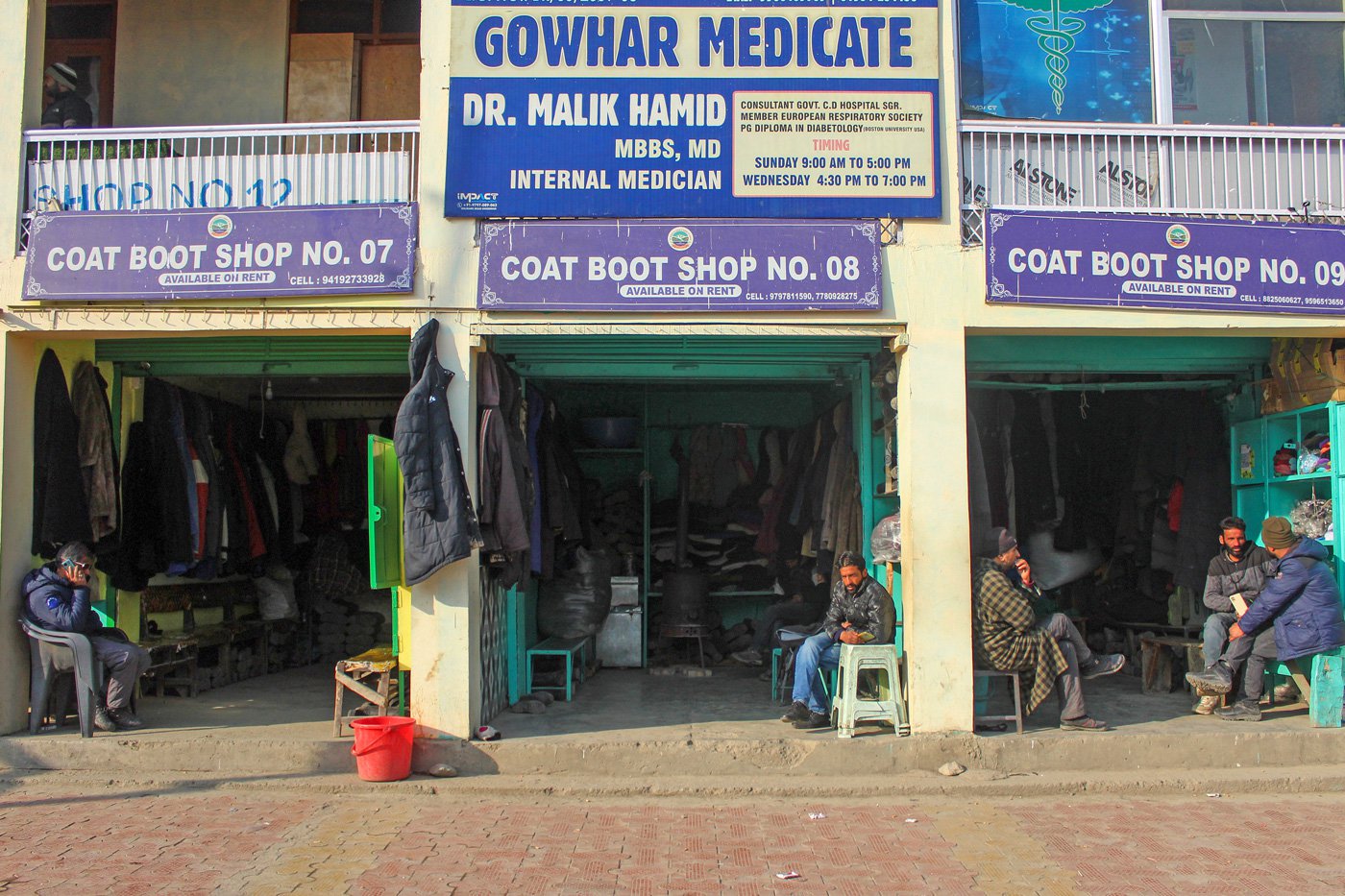

Left: Local warm clothing rental shops in Tangmarg, popularly called Coat and Boot stores are empty. Right: Fayaz Ahmed (left) and Firdous Ahmad (right) are hoping that it will snow and business will pick up


Employees of clothing rental shops watch videos on their mobile phones (left) or play cricket in a nearby ground as they wait for work
Deded and 11 other employees are desperately waiting for snowfall so they can earn what they used to in better days: Rs. 40,000 a day by renting out 200 coats and jackets, each costing Rs. 200. Tourists today don't need the heavier winter protective gear.
It’s not just the tourist season that is affected by the lack of snow, but what’s to come after as well. "The entire valley will feel the lack of snow. There will be no drinking or agricultural water. Villages in Tangmarg are already experiencing a water shortage," says ski guide Reshi.
Winter snowfall usually recharges cryosphere reserves like glaciers and sea ice (considered the largest freshwater reserves on earth). The reserves govern the water security of the region. "Any deficit in glacier ice will severely affect our irrigated agriculture. Snow that melts in the summer in the higher reaches of Kashmir is the main water source,” says Muslim, “ But today, we have no snow in the mountains. People in the valley will suffer."
Back at the clothing store in Tangmarg, Deded and his colleagues cannot assuage their worries. "Twelve people work here, and we all have families of 3-4 people." They earn Rs. 1000 a day under present circumstances and have to split the money equally. "How will we feed our families?" asks the salesman, "This weather is killing us."
